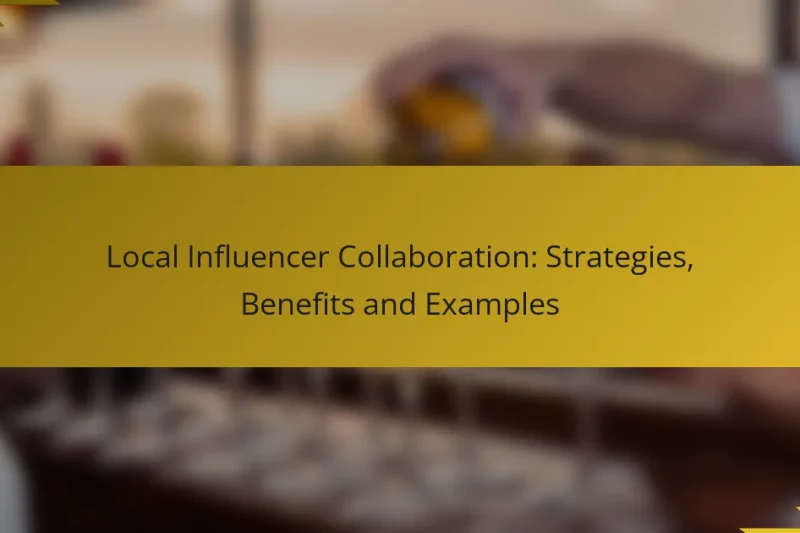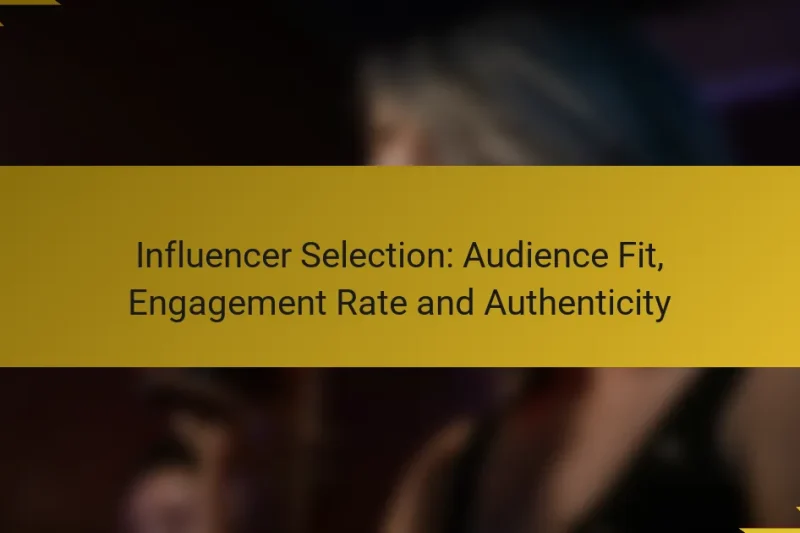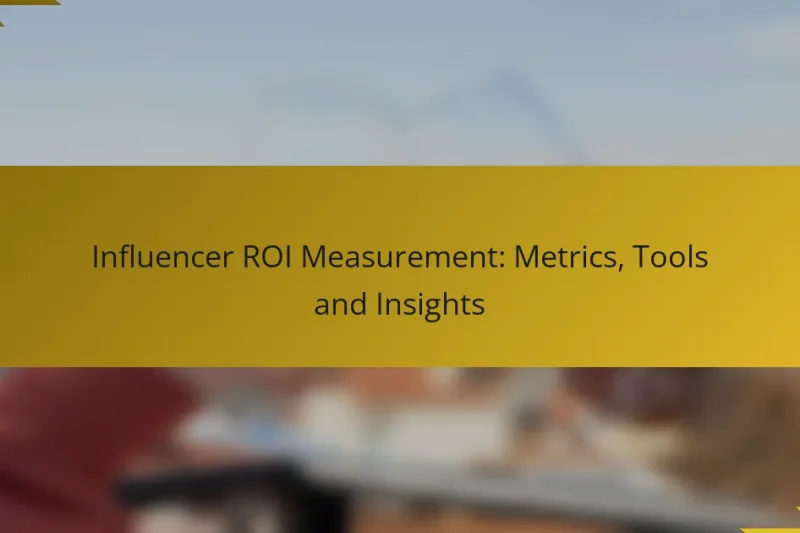Influencer contract negotiation is a critical process that ensures both parties have a clear understanding of … Influencer Contract Negotiation: Terms, Pricing and DeliverablesRead more
Social Media Marketing for Breweries: Leveraging Influencer Marketing
In the competitive landscape of craft beer, breweries can significantly boost their visibility and credibility by leveraging influencer marketing on social media. By partnering with influential figures in the craft beer community, breweries can authentically promote their products to engaged audiences across platforms like Instagram, Facebook, and TikTok. This strategy not only enhances brand awareness but also fosters genuine connections with potential customers through creative collaborations and community engagement.
Local Influencer Collaboration: Strategies, Benefits and Examples
Collaborating with local influencers presents a unique opportunity for businesses to connect with their target audience … Local Influencer Collaboration: Strategies, Benefits and ExamplesRead more
Influencer Selection: Audience Fit, Engagement Rate and Authenticity
Choosing the right influencer for your brand requires careful consideration of audience fit, engagement rate, and … Influencer Selection: Audience Fit, Engagement Rate and AuthenticityRead more
Influencer ROI Measurement: Metrics, Tools and Insights
Measuring influencer ROI is crucial for understanding the effectiveness of your marketing efforts and their alignment … Influencer ROI Measurement: Metrics, Tools and InsightsRead more
How can breweries leverage influencer marketing on social media?
Breweries can effectively leverage influencer marketing on social media by partnering with individuals who have a strong following in the craft beer community. This approach helps to enhance brand visibility and credibility, as influencers can authentically promote products to their engaged audiences.
Identifying relevant influencers
To identify relevant influencers, breweries should look for individuals who align with their brand values and target audience. Focus on influencers who specialize in craft beer, food pairing, or local events to ensure a genuine connection with potential customers.
Utilize social media tools and platforms to analyze engagement rates, follower demographics, and content quality. Micro-influencers, with followers in the low thousands to tens of thousands, often yield higher engagement rates compared to larger influencers.
Building authentic partnerships
Building authentic partnerships involves creating mutually beneficial relationships with influencers. Start by reaching out with personalized messages that highlight why the influencer’s content resonates with your brand.
Offer influencers exclusive experiences, such as brewery tours or tastings, to foster genuine enthusiasm for your products. This personal touch can lead to more authentic and compelling content that resonates with their audience.
Creating engaging content
Engaging content is crucial for successful influencer marketing. Encourage influencers to create diverse content types, such as videos, blog posts, or social media stories, showcasing your brewery’s unique offerings.
Consider running collaborative campaigns, such as contests or giveaways, where influencers can engage their followers while promoting your brand. This not only increases visibility but also fosters community interaction.
Measuring campaign success
Measuring the success of influencer marketing campaigns involves tracking key performance indicators (KPIs) such as engagement rates, reach, and conversion rates. Use analytics tools to monitor how well the content is performing across different platforms.
Set clear goals before launching a campaign, such as increasing brand awareness or driving sales. Regularly review the results to refine future campaigns and ensure that partnerships remain effective and aligned with your brewery’s objectives.
What are effective social media platforms for breweries?
Breweries can effectively utilize social media platforms like Instagram, Facebook, and TikTok to reach their target audience and enhance brand visibility. Each platform offers unique features that cater to different aspects of marketing, from visual storytelling to community engagement and viral content creation.
Instagram for visual storytelling
Instagram is ideal for breweries looking to showcase their products through stunning visuals. High-quality images of beer, brewing processes, and brewery events can attract followers and create a strong brand identity.
Utilize Instagram Stories and Reels to share behind-the-scenes content or limited-time offers, which can engage your audience and encourage them to visit your brewery. Consistent posting and interaction with followers can help build a loyal community.
Facebook for community engagement
Facebook serves as a powerful tool for breweries to foster community engagement. Creating a dedicated page allows breweries to share updates, events, and promotions while interacting directly with customers through comments and messages.
Consider hosting events or contests to encourage participation and sharing among followers. Facebook Groups can also be effective for building a community around your brand, where fans can discuss their favorite brews and share experiences.
TikTok for viral marketing
TikTok is a rapidly growing platform that breweries can leverage for viral marketing. Short, engaging videos showcasing brewing techniques, fun challenges, or customer testimonials can capture attention and encourage sharing.
To maximize reach, use popular trends and hashtags relevant to the craft beer community. Collaborating with TikTok influencers can also amplify your message and attract a younger audience interested in unique beer experiences.
What strategies enhance brewery visibility through influencer marketing?
To enhance brewery visibility through influencer marketing, focus on building authentic relationships with influencers who resonate with your brand. Effective strategies include hosting events, collaborating on product launches, and leveraging user-generated content to engage audiences and expand reach.
Hosting influencer events
Hosting events for influencers can create buzz around your brewery and foster genuine connections. Consider organizing tastings, brewery tours, or exclusive launch parties where influencers can experience your products firsthand and share their experiences with their followers.
When planning these events, ensure they reflect your brand’s identity and values. Limit the number of attendees to maintain an intimate atmosphere, allowing for meaningful interactions. Aim for a mix of local and niche influencers to maximize your reach.
Collaborating on exclusive product launches
Collaborating with influencers on exclusive product launches can generate excitement and anticipation among their followers. This could involve creating a limited-edition beer or a unique flavor that the influencer helps to develop, making them feel invested in the product.
Promote the collaboration through social media teasers and countdowns. Consider offering early access or special promotions for the influencer’s audience, which can drive traffic to your brewery and boost sales during the launch period.
Utilizing user-generated content
User-generated content (UGC) is a powerful tool for breweries looking to enhance their visibility. Encourage customers to share their experiences with your products on social media by creating a unique hashtag or running contests that incentivize sharing.
Feature UGC on your own social media channels to showcase authentic customer experiences. This not only builds community but also acts as social proof, making your brewery more appealing to potential customers. Regularly engage with users who share content to foster loyalty and encourage further participation.
What are the key metrics for measuring success?
Key metrics for measuring success in social media marketing for breweries include engagement rates, follower growth, and sales conversions. These metrics provide insights into how well your marketing efforts resonate with your audience and contribute to your business goals.
Engagement rates
Engagement rates reflect how actively your audience interacts with your content, including likes, shares, comments, and saves. A higher engagement rate indicates that your content is resonating well with your followers. For breweries, aiming for engagement rates between 1% to 5% is generally considered effective.
To improve engagement, focus on creating visually appealing posts that showcase your products, behind-the-scenes content, and community events. Regularly interacting with followers through comments and messages can also enhance engagement.
Follower growth
Follower growth measures how quickly your social media audience is expanding over time. A steady increase in followers indicates that your brand is gaining visibility and attracting interest. Aim for a monthly growth rate of around 5% to 10% to ensure your social media presence is growing effectively.
To boost follower growth, consider running targeted ads, collaborating with local influencers, or hosting giveaways that encourage sharing and tagging. Consistent posting and engaging content can also help attract new followers.
Sales conversions
Sales conversions track how many social media interactions lead to actual purchases. This metric is crucial for breweries as it directly ties social media efforts to revenue. A conversion rate of 1% to 3% is typical for social media marketing, but this can vary based on the platform and audience.
To enhance sales conversions, include clear calls to action in your posts, such as links to your online store or promotions for in-person visits. Analyzing which posts drive the most sales can help refine your strategy for future campaigns.
What are the challenges of influencer marketing for breweries?
Breweries face several challenges when engaging in influencer marketing, including finding suitable influencers, managing their brand reputation, and dealing with budget constraints. Each of these factors can significantly impact the effectiveness of marketing campaigns and the brewery’s overall image.
Finding the right influencers
Identifying the right influencers is crucial for breweries to ensure their marketing messages resonate with the target audience. This involves researching influencers who align with the brewery’s brand values, have a genuine interest in craft beer, and possess an engaged following. Tools like social media analytics can help assess an influencer’s reach and engagement rates.
Breweries should consider micro-influencers, who often have smaller but highly engaged audiences, as they can provide authentic endorsements at a lower cost. Establishing clear criteria for influencer selection can streamline this process and lead to more successful partnerships.
Managing brand reputation
Maintaining a positive brand reputation is essential for breweries, especially when working with influencers who may not fully represent the brand’s values. Breweries should establish guidelines for influencer content to ensure it aligns with their messaging and image. Regular monitoring of influencer posts and audience feedback can help identify potential issues early.
It’s also important to have a crisis management plan in place. If an influencer’s actions or statements conflict with the brewery’s values, a swift and appropriate response can mitigate damage to the brand’s reputation.
Budget constraints
Budget constraints can limit a brewery’s ability to engage with high-profile influencers or run extensive campaigns. Breweries should determine a realistic budget for influencer marketing that includes compensation, product samples, and promotional costs. Allocating funds wisely can maximize the return on investment.
Exploring various compensation models, such as performance-based pay or product exchanges, can help breweries work within their financial limits. Additionally, focusing on local influencers can reduce costs while still effectively reaching the target market.
How can breweries select the right influencers?
Breweries can select the right influencers by focusing on those whose audience aligns with their target market and who demonstrate high engagement with their followers. This ensures that marketing efforts resonate effectively and yield better results.
Assessing audience alignment
To assess audience alignment, breweries should analyze the demographics of an influencer’s followers, including age, location, and interests. For example, if a brewery targets craft beer enthusiasts aged 25-40 in urban areas, influencers with a similar follower profile will be more effective.
Tools like social media analytics can provide insights into audience composition. Additionally, breweries can look for influencers who frequently engage with content related to craft beer, local events, and brewing culture, which indicates a shared passion.
Evaluating engagement quality
Evaluating engagement quality involves looking beyond follower counts to assess how actively an influencer interacts with their audience. High engagement rates, such as likes, comments, and shares, indicate that followers are genuinely interested in the content being shared.
Breweries should consider the average engagement rate, which typically ranges from 1% to 5% for most social media platforms. Influencers with a consistent pattern of meaningful interactions, such as responding to comments or creating polls, are often more valuable partners.



